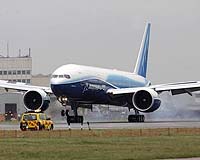 |
Canberra, Australia (UPI) Jul 2, 2010 L-3 Communications MAS in Canada and BAE Systems Australia have completed a fuselage upgrade on an unspecified number of older Australian air force F/A-18 Hornets. The work to extend the operational life of the aircraft to around 2020 involved replacing the center barrel unit, the main structural element to which the wings and undercarriage are attached. L-3 MAS and BAE Systems Australia worked on the barrel replacement program under contract to Australia's Defense Materiel Organization. "The completion of this program will ensure that the Hornet fleet safely achieves the planned withdrawal date of 2020," said Minister for Defense Materiel and Science Greg Combet. "The success of this program is a reflection of the strong relationships formed between the DMO and its industry partners, in delivering quality products to the defense services." The Royal Australian Air Force operates around 55 of the single-seat F/A-18A and 16 of the twin-seat F/A-18B Hornets. Under Phase 3.2 of the Classic Hornet Upgrade program, the air force earmarked a number of its older McDonnell Douglas Hornets as needing replacement of the center barrel. The all-weather fighter, now a part of McDonnell Douglas/Boeing Northrop manufacturing group, first flew in November 1978 before active service started in 1983 with the U.S. Navy. The primary users are the U.S. Navy, U.S. Marine Corps and the air forces of Canada, Australia and Spain. Canada remains the largest export operator of the aircraft and bought around 140 of the twin-engine, mid-wing planes, designated CF-18. It purchased directly from the manufacturer instead of going through the U.S. Navy which acts as project manager for export orders. The fighter's primary missions are fighter escort, fleet air-defense, suppression of enemy air defenses, air interdiction, close air-support and aerial reconnaissance. The Classic Hornet upgrade comes as Australia announced last week that it will fly six more new F/A-18F Super Hornets from the United States to Australia this month. The planes will arrive from the U.S. Naval Air Station Lemoore, Calif., and will be stationed at the Royal Australian Air Force base in Amberley in the northeast state of Queensland. The first five Super Hornets arrived in March at Amberley. By the end of 2011, all 24 Super Hornets will be in Amberley, Australia's most important base with the country's largest number of personnel, 3,500 military and civilians. The larger and heavier F/A-18Fs are a bridging capability before Australia takes delivery of the expected Joint Strike Fighter. The Super Hornet also has an improved range and payload over its earlier version. L-3 MAS, which worked on the Classic Hornet upgrade, also provides support services for the plane in Australia. L-3 MAS has more than 35 years in the aerospace and defense industries, at the very beginning as Canadair, then as Bombardier Defense Services and, since 2003, as an L-3 global aerospace and defense sector company. It has more than 20 years experience in CF-18 Hornet fleet management and maintenance, including upgrades. L-3 MAS also provides C-130 Hercules fleet management and maintenance, in-service support for the CH-148 Cyclone Maritime Helicopter Program and developmental work on unmanned aerial vehicles.
Share This Article With Planet Earth
Related Links Aerospace News at SpaceMart.com
 Boeing And FAA To Team For Cleaner Skies And Quieter Airplanes
Boeing And FAA To Team For Cleaner Skies And Quieter AirplanesWashington DC (SPX) Jun 30, 2010 Boeing and the U.S. Federal Aviation Administration has announced that they will work together to speed the development and application of environmentally progressive technologies for cleaner and quieter jet aircraft. As part of the FAA's Continuous Lower Energy, Emissions and Noise (CLEEN) program, Boeing and the FAA each will contribute up to $25 million during the next five years to con ... read more |
|
| The content herein, unless otherwise known to be public domain, are Copyright 1995-2010 - SpaceDaily. AFP and UPI Wire Stories are copyright Agence France-Presse and United Press International. ESA Portal Reports are copyright European Space Agency. All NASA sourced material is public domain. Additional copyrights may apply in whole or part to other bona fide parties. Advertising does not imply endorsement,agreement or approval of any opinions, statements or information provided by SpaceDaily on any Web page published or hosted by SpaceDaily. Privacy Statement |